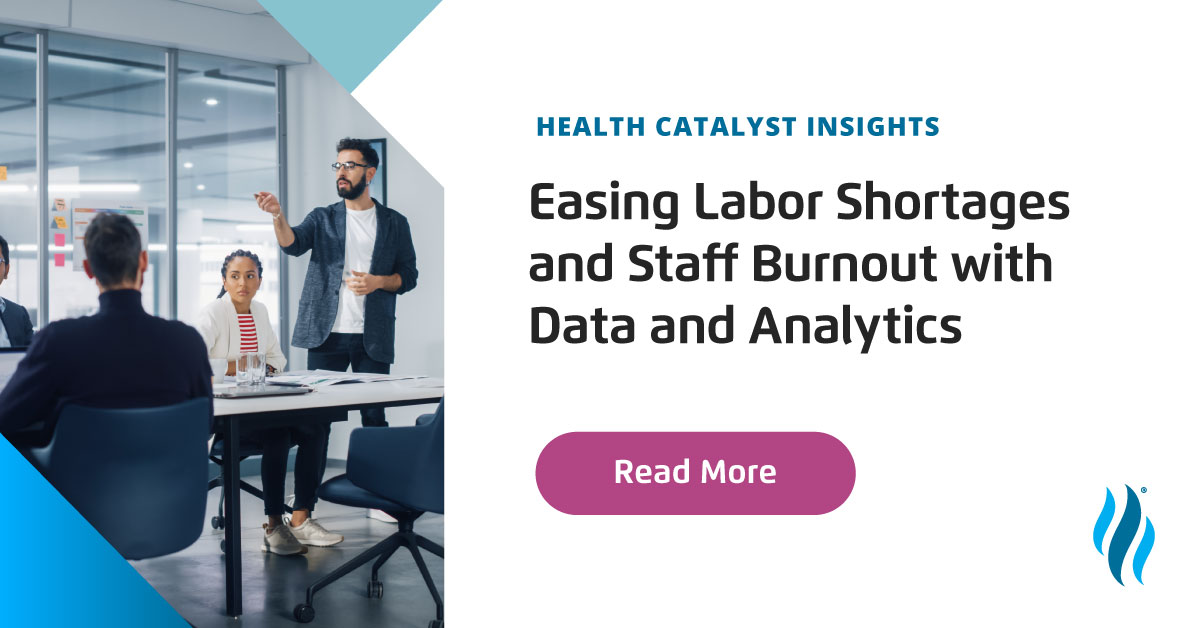As healthcare organizations across the country face labor shortages, limited resources, and growing expenses, it’s never been more important to deploy valuable resources where they’ll be most impactful. Learn how predictive risk stratification helps organizations pinpoint their most vulnerable patients.
 Download
Download

Labor shortages and staff burnout continue to be significant challenges for healthcare organizations and a costly burden for the healthcare system. According to a 2001 U.S. News & World Report, around 20% of healthcare workers have quit their jobs, and those staff shortages have had a negative impact on safety and quality. In addition, a 2019 study published in the Annals of Internal Medicine estimated that physician burnout costs the U.S. healthcare industry an estimated $4.6 billion a year, and that number is likely larger today.
To manage patient populations more effectively and efficiently, healthcare organizations must be able to automate predictive risk stratification based on claims data, clinical data, social determinants of health, and more. When care teams know which patients need the most help, which patients have rising risk, and which patients are healthy, they can focus their valuable time where it’s needed most.
As health systems work to manage high-risk populations appropriately, while also caring for those with rising risk and engaging with healthy populations with the right targeted interventions, stratification is essential.
Caption: Aggregate information with an analytic tool to identify populations and deliver appropriate interventions
By leveraging predictive risk stratification, organizations can uncover opportunities, reduce the burden on care teams, and improve care quality. With this type of population stratification, care teams can easily zero in on the most vulnerable populations.
To perform process improvement successfully, trustworthy data is essential. It must be fully integrated, transparent, accurate, and understood by those who are using it. Without a robust, accurate risk model, organizations may make erroneous decisions or focus valuable efforts where they are not impactful. There are many complexities to developing an accurate risk model. For instance, if the model doesn’t factor in clinical, social, and behavioral risk factors, it may not actually capture your patient population accurately. As care teams manage heavy workloads with limited resources, leveraging data and analytics to identify the most high-value opportunities is crucial.
Once an organization has embarked on a predictive risk stratification journey, it’s essential to measure the effectiveness of its interventions and ensure they are achieving the goals of the organization. If you’re looking to make a difference in terms of clinical outcomes and you don’t have a process improvement methodology in place, you’re going to be playing "whack a mole,” missing every time because you’re guessing at the problem you’re trying to solve.
Interested in learning more, watch an on-demand webinar
Data and analytics combined with continuous process improvement empower organizations to ensure valuable resources are deployed where they will deliver the most value – both economically and clinically.
Would you like to learn more about this topic? Here are some articles we suggest: